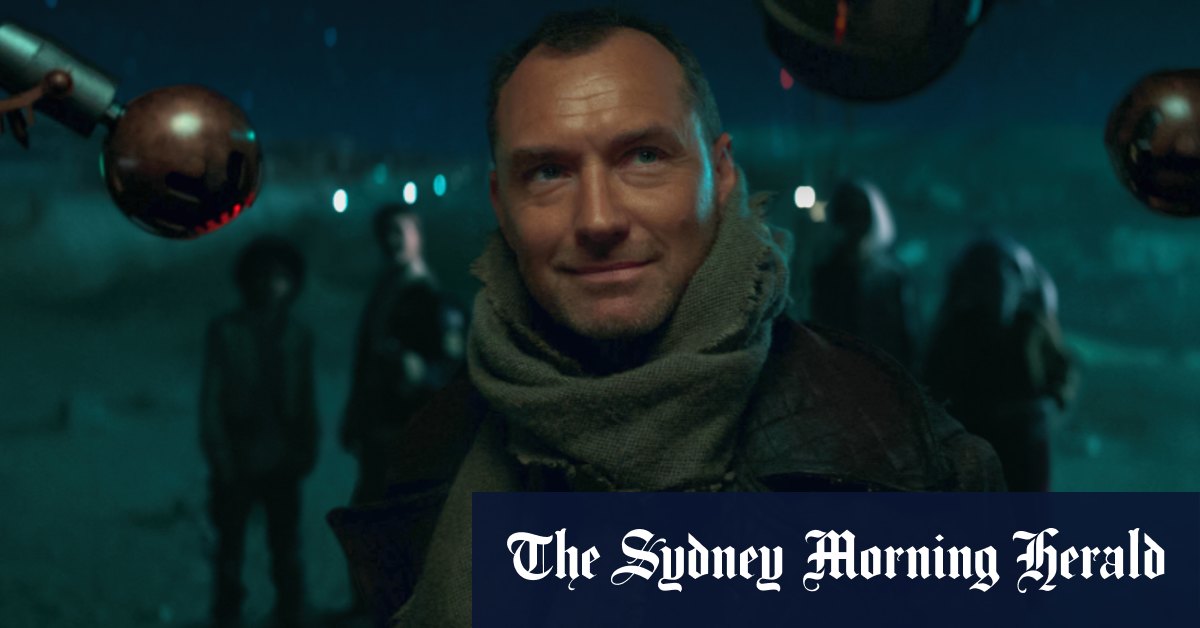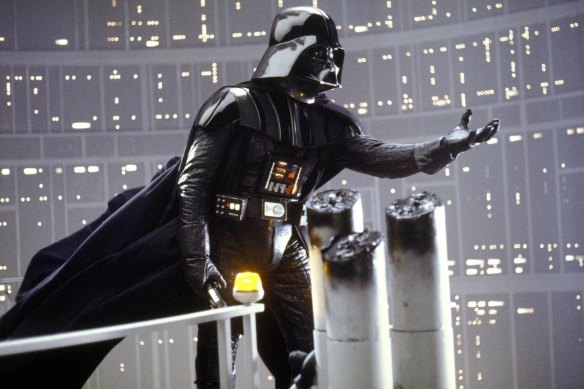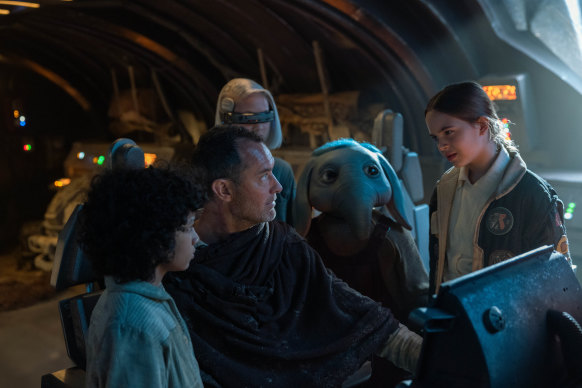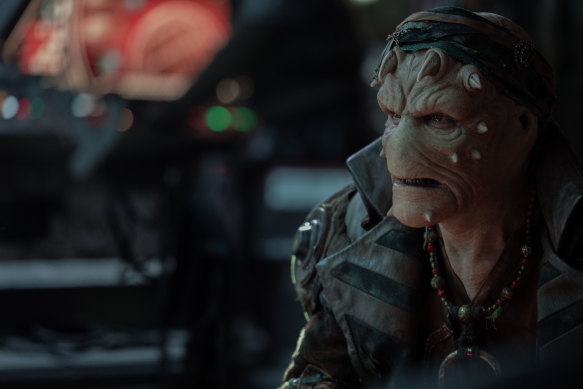
Unusually, in Star Wars: Skeleton Crew, Law’s character Jod Na Nawood is presented somewhat ambiguously. He has been described as “a quick thinker who uses his charm to get out of different scenarios”, but that could as easily make him a rough analogue for Han Solo as it could for something more sinister. And the series’ trailer seems to suggest it could go either way.
“His ambiguity is key to his role in the piece as a whole and his relationship with the children,” Law says. “But I would go even further than that and say it’s almost his relationship with himself. There is, I would say, without hanging his hat on this, a little of Luke Skywalker, and a little of Han Solo.

Do the bad guys always wear black? Star Wars villain Lord Darth Vader.Credit: Lucasfilm
“He’s surviving and hasn’t had the clear sort of connection that, say, Luke Skywalker had, but surviving like Han Solo in a messy world,” Law says. “The journey with the kids, my backstory was that he didn’t really have a childhood, so he doesn’t treat the children like children, they’re just small adults, but he himself is actually a big child, and so they kind of fit in a funny way.
“Not to say that you don’t like him or you’re not meant to like him, but I want [the audience] to understand why he is making the decisions he makes,” Law adds. “Some of them are questionable and some of them aren’t questionable. But what I loved about the opportunity with the role is that he’s contradictory, he contradicts, and he’s full of contradictions himself.”
In a sense, Jod Na Nawood’s approach to the children – that he doesn’t treat them as children, but as small adults – inadvertently taps into one of the reasons that the Star Wars franchise became a global juggernaut in the first place. Back in 1977, creator George Lucas’ approach to storytelling was very much the same.
“It is cracking a code and having [George Lucas’ apprentice] Dave Filoni be one of your producers, is having George there in a way because it works so closely,” Watts says. “It’s a tonal thing to get, especially when you’re figuring out what the story is.” At the same time, Ford says, “you don’t want to try to copy Star Wars, but you want to try to copy the process.”

Jod Na Nawood (Jude Law) with (from left) Wim (Ravi Cabot-Conyers), KB (Kyriana Kratter), Neel (Robert Timothy Smith) and Fern (Ryan Kiera Armstrong) in Star Wars: Skeleton Crew.Credit: Lucasfilm
The entry point to Star Wars, creatively, was also to tap into the various cultural touchpoints that influenced Lucas in the first place. Elsewhere, critics have pointed to Dune, and to Hidden Fortress. For Watts and Ford “we watched old pirate serials”, Watts says. “That was a way to sort of capture the pirate spirit in a way that felt Star Warsy.
“And that helps you crack a storytelling problem or figure out a tonal imbalance,” Watts says. “For us, it was figuring out what were the things that we loved, what were the genres that we were drawn to, and using those as an entry point to tell our own story within the story.”
One of the most earthly aspects of Star Wars: Skeleton Crew is that, like the new generation of Star Wars series such as The Mandalorian, the series uses a blend of real sets and digital sets shot in the 360-degree filming environment known as the Volume. What you see less and less are green screens, which more or less peaked with the CGI-heavy Star Wars prequels, released in 1999, 2002 and 2005.
Law’s perspective on the trend is almost unique; in addition to Star Wars: Skeleton Crew, he also starred in Sky Captain and the World of Tomorrow, which was one of the first films to be shot almost entirely in a CGI environment. That is, a digital blue screen and overlaid digital backgrounds.

Vane (Marti Matulis) in Star Wars: Skeleton Crew.Credit: Lucasfilm
“I had no problem working on blue screen, and it feels sometimes like I’m talking a lot about play as a child, but on Sky Captain, I was excited about the idea of having to visually imagine everything,” Law says. “It was all in my head, and we were going off pictures, but it really was floating tennis balls and my car was a chair with a steering wheel in my hands.
“I think the rules now are very much try and lean towards the technology of those first three [Star Wars movies, from 1977-1984],” Law adds. “Certainly, in what the camera can do and in the interaction with props and ground and sets, it’s just so much more fulfilling for an actor to work on that.”
Loading
The Volume is something else again: a circular space which can create 360-degree wraparound digital sets. “I had a great experience on it, its flexibility is extraordinary,” says Law. “Walking on the surface of a small moon or landing on a docking bay of a vast port with hundreds of ships around you, if you can look around and see all of those things, it can’t help but feed you and feed your sense of belief.”
And the most magic part of it all? That much of the original Star Wars universe was production designed “on a budget, on a tight deadline, made out of junk, [just] made out of pieces,” says Ford. “So it has this amazing artistry and craft and genius to turning something from just some stuff into a spaceship wall.”
Much of the architectural code in Star Wars is subtly signposted, Watts adds. “It’s like rounding edges in certain shapes and the strength of certain shapes and putting them next to each other. As just a pure visual language, Star Wars is fascinating and so much of it was the process that it took to get there. It’s why there’s a werewolf in the cantina. They ran out of costumes.”
Star Wars: Skeleton Crew screens on Disney+ from Tuesday (December 3).



